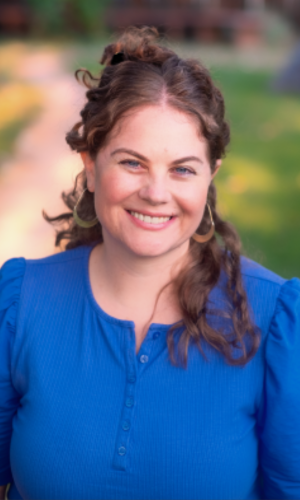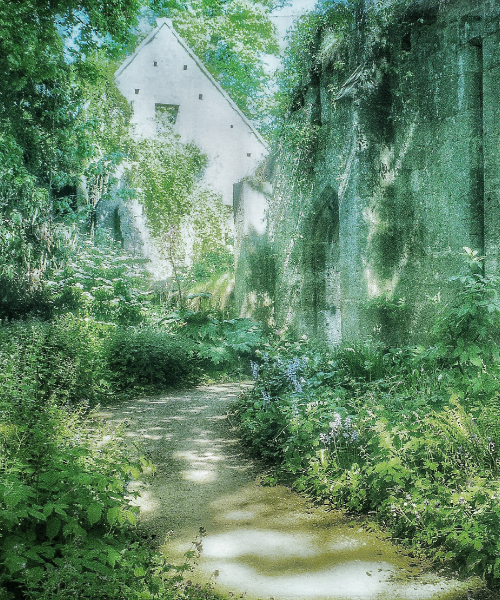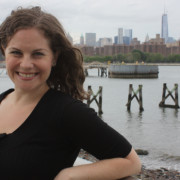Thursday
Buddhism, Psychedelic-Assisted Therapy and the Spiritual Path: An Interview with Dr. Sara Lewis
by Jillian Johnson
Register for the Buddhism, Psychedelic-Assisted Therapy and the Spiritual Path One-Day Retreat
One of the five main precepts in Buddhism is to avoid intoxicants, and it is clear that the use of substances can lead to spiritual bypassing. Yet many renowned practitioners in the West have talked openly about psychedelics as a catalyst to spiritual awakening that led them to the Dharma. Today, we sit down with Dr. Sara Lewis, co-founder of the Memoru Center for Visionary Healing Arts in Boulder, Colorado, and the Center for Psychedelic Studies at Naropa University, where she also served as an associate professor, and author of Spacious Minds: Trauma and Resilience in Tibetan Buddhism, to discuss the use of psychedelics in therapy and along one’s spiritual journey. In this interview, Sara provides us with her personal and professional perspective while considering how such practices may intersect, or not, with the Buddhist path.
Dr. Sara Lewis will hold an online mini-retreat, Buddhism, Psychedelic-Assisted Therapy and the Spiritual Path, through Shambhala Online on July 20, 2025. Click here to learn more and to register.
Jillian: Hi Dr. Lewis, thank you so much for being here with us today to share more about your work and knowledge in the field of psychotherapy and the implementation of psychedelics in mental health settings and spiritual pursuits.
Would you please tell us a little bit about your ‘why’ behind your work in mental health and how it expanded into the area of psychedelic-assisted therapy?
Dr. Lewis: I have long been interested in the mind: concepts of mind, the beauty and the challenges of the mind, and what it means to be human. As an anthropologist of religion and a psychotherapist, I am also deeply interested in how our connection to the divine changes across culture. In one way or another, I have been involved in the field of psychedelic studies for the last twenty years, yet it is more recent that psychedelic therapy has become more mainstream. As a Buddhist, I continue to see my clinical work as a skillful means to work with suffering in the world.
Jillian: How fascinating. We heard you opened a new clinic? Congratulations and please tell us more!
Dr. Lewis: Yes! Memoru Center for Visionary Healing Arts is a contemplative-based psychedelic training institute and community clinic where we offer legal psychedelic therapy. We can accept out of state clients who wish to travel to Colorado for a psilocybin experience. The Memoru clinic has a strong connection to Naropa University, where most of the cofounders have either worked as faculty or completed their studies.
Jillian: That’s very exciting, congratulations again! Speaking of legal psychedelic therapy, what do you feel are the current social and political climates surrounding the utilization of substances (primarily psilocybin and MDMA) in controlled mental health and spiritual settings? Are you noticing more or less acceptance in your typical day-to-day professional and personal interactions than in recent years?
Dr. Lewis: In general, there is a lot of interest and excitement for the therapeutic use of psychedelics. Many people understand that among veterans, abuse survivors, and others with PTSD, our standard treatments often fall short. As well, there is deep potential for plant medicines and psychedelics for those navigating the end of life. At Memoru, we will have a family program that aims to work with entire families–this might be when one person is at the end-of-life, navigating the post-partum period after birth, couples work, or a veteran returning home. When psychedelic care is done in a way that is slow, intentional and safe, I think there is significant support. At the same time, our basic health care infrastructure is not really set up to easily make this type of work accessible. Psychedelics do not fit easily into a capitalist system and without sounding too conspiratorial, the global Big Pharma system has many reasons to hinder the kind of paradigm shift many of us interested in psychedelic-assisted therapy are hoping for. Still, I believe that most of us yearn for change. With psilocybin now legal in various capacities in Oregon, Colorado and most recently, New Mexico, I believe in the next 5-10 years we will see a significant shift in accessibility of these modalities in North America and around the globe.
Jillian: Thank you so much for this thoughtful response, Sara. It is comforting to know that all areas of support are being explored for those seeking treatment and their families. Do you feel momentum and public support will eventually result in the integration of psychedelics into mainstream healthcare?
Dr. Lewis: Absolutely. And this could go the other direction as well if we do not take seriously the ethical responsibility to work with these medicines in a safe way. Many cultures across the world understand plant medicines to be living beings with sentience. They shouldn’t be “taken” in an extractive way. If we can relate with the cultures ethically who are stewards of these medicines, and collaborate and learn from them, I think we may have good results. For society as a whole to open up to them, I think we are in a critical period of needing to demonstrate that as a human society we can be trusted with these powerful agents. It’s up to us! But I feel the plants and fungi also want to help.
Jillian: I love your statement “…I feel the pants and fungi also want to help” and the care you show towards our Plantae and Fungi kingdoms. Have you noticed an increase in the number of patients and clients willing to consider psychedelics as part of their treatment plan for depression, anxiety, addiction, PTSD, etc.?
Dr. Lewis: Yes, very much so. Many people have earnestly tried conventional therapies without much relief. There are also many people seeking to work with suffering within the human condition in a way that honors and deepens their spiritual path. So there’s sort of a question about whether the work is “mental health work,” “spiritual work,” or something else. There is also a lot of joy, beauty and connection, something that may not be fully honored in a traditional treatment plan that tends to focus rather narrowly on the eradication of symptoms.
Jillian: It sounds like a very integrative approach that is catered to each individual’s unique needs and requirements, which is still lacking in many areas of healthcare. Would you tell us more about a situation(s) where the assistance of psychedelics, in a therapeutic application, aided a client in a breakthrough (mental, emotional and/or spiritual) that may not have occurred, or may have taken longer to occur, with more traditional mental health practices? Are you able to expand on the experience, at least from your perspective, and how that felt?
Dr. Lewis: I have had so many clients with intergenerational and ancestral experiences, even when they weren’t necessarily seeking that out. This has looked like deeply experiencing and seeing the ways that an ancestral burden has been passed down through the ages, visitations from elders who have passed, and sometimes a deep experience of connection and homecoming into one’s ancestral lineage. This happens so frequently that I myself, have embarked on a formal process of Ancestral Lineage Healing over the past year to better learn to work with my own spiritual lines. We will have more on this in the mini-retreat!
Jillian: This sounds not only incredibly interesting, but heart-warming as well. What a beautiful experience for both you and your clients. I am intrigued to hear more at the mini-retreat! In which situation(s) do you recommend someone not take psychedelics or partake in psychedelic-assisted therapy if it is a path they are interested in pursuing for their mental health and/or spiritual journey?
Dr. Lewis: These agents can be very powerful and it’s important to know if it’s the right time. I receive many referrals for people who have had negative even traumatic experiences resulting from psychedelics. Beyond contraindicated conditions like psychosis and mania (though even those who have these histories may be able to work in psychedelics under certain conditions), I wouldn’t recommend jumping into working with them if things aren’t stable enough to be able to accommodate potentially big and sometimes disruptive shifts. Sometimes these medicines work through disruption and dissolving: this could be to harmful patterns, misperceptions, ego-clinging, itself, or even the dissolving of relationships, career or other major disruptions.
Jillian: This is a very strong point to consider. Thank you for mentioning ‘being ready’ for shifts. While it is often said “The only constant change,” it is important to remember to be as grounded as possible before inviting a powerful catalyst for said change. What would you recommend as some of the “should” and “should nots” before holding a psychedelic session in terms of choosing an appropriate environment, monitoring one’s current mental state, integrating other practitioners and/or professionals, etc.? In a sense, what would you recommend in terms of setting yourself up for an enlightening experience?
Dr. Lewis: Most people do not need to work with a psychedelic therapist or clinician to have a safe and meaningful experience. This was recognized in the state of Colorado that has approved personal use of psilocybin mushrooms for anyone 21 years and over. Colorado also allows for individuals to embark on training as facilitators who do not hold a clinical license, again recognizing that many people can be trained to hold space for someone else ethically and with care. However, if the intention is really to engage in therapeutic work, it would be important to seek out a trained and licensed clinician. Sometimes it can be hard to really discern whether the work is “therapeutic” or whether it is “spiritual.” But this isn’t a new problem. Many cultures around the world do not separate the paths of healing and spirituality. What is most important is to feel that the setting and the practitioner is slow, intentional, and rooted in some kind of practice lineage. I would not get involved with anyone who doesn’t seem to have any mentors, elders, or community of accountability.
Jillian: Very true, consistent and quality integrative care that takes into account physical, mental, spiritual, and emotional health of an individual is a hurdle that seems to continually appear, at least in American culture. On a more casual note, if you were talking freely (perhaps in a bar) to a captivated audience, what would your elevator pitch be when introducing a metaphysical discussion on the topic of psychedelics in therapy or on one’s spiritual journey?
Dr. Lewis: I probably wouldn’t make one. A person really needs to feel the call, so to speak, on their own! If you listen and hear the call, however, many of us all across the globe would love nothing more than to dive into that conversation!
Jillian: What a conscientious approach. Wait for the invitation. And now for our final interview question, what has the use of psychedelics done for your personal spiritual growth? Do you have any stories you’re willing to share with us?
Dr. Lewis: Yes, but I will save these for the mini-retreat. Hope you can join!
Thank you, Sara, we’re looking forward to it! Myself and Shambhala Online thank you for taking the time to answer our questions about these exciting advances in patient/client care. You have touched on many dynamic aspects regarding the use of psychedelics in client care and we are eager to dive deeper on July 20!
Dr. Sara Lewis is Co-founder of Memoru Center for Visionary Healing Arts, a psychedelic clinic and training institute in Boulder, Colorado. She served as Associate Professor at Naropa University in Buddhist-Informed Counseling, where she also co-founded the Center for Psychedelic Studies. Sara is author of Spacious Minds: Trauma and Resilience in Tibetan Buddhism, an ethnographic study of mind, memory and recovery from collective trauma in the Tibetan exile community. She teaches in Shambhala on the topic of Buddhism and psychedelics, and has also served in a number of leadership roles, including a term on the Interim Shambhala Board.
Entries filed under Community Articles
Intensity in a Bold Land – HIGHLIGHT
Cynthia Kneen expands on her experience teaching Shambhala dharma in South Africa. During her three months there, she gave three public talks, three radio interviews, Shambhala Guide training, an introductory weekend based on her book Awake Mind, Open Heart, a dharma art evening to a ... continuePosted October 22, 2010 by
Grand Opening: Breeze of Delight – HIGHLIGHT
On the auspiscious day of Monday, September 20, Lady Konchok, the Sakyong’s mother, and her family, Lama Pegyal and Gyurme Dorje Lama, welcomed over 60 people to Marpa House. Lady Konchok cut the black ribbon of samsara to open a Tibetan butter lamp offering ceremony. ... continuePosted October 15, 2010 by Jennifer Holder
Want to Stream Pema Chodron Live, For Free? – HIGHLIGHT
The Shambhala Times, in partnership with Shambhala Publications, is pleased to announce a contest in which five people will win free, live streaming of Pema Chodron’s Smile at Fear weekend from California October 15-17. Find out more about the event by clicking here. To win your ... continuePosted September 27, 2010 by
Harvesting Peace in the Chinese Language – HIGHLIGHT
Yeachin Tsai has kindly translated Sakyong Mipham’s 2010 Harvest of Peace letter into Chinese. 2010年「和平的秋收」薩姜米龐仁波切關中信函 祈願文 在心的宇宙一切皆為可能; 在心的空隙一切皆盡涵容; 在珍貴的身體內,光芒四射的能量搏動; 在世界靈動變化的的巧合裡,吉祥永遠準備就緒。這是多傑札都(創巴仁波切)的贈禮。讓我們這些無愧的香巴拉人每天早上以一顆廣袤的心智、難以稱量的大心、以及一個充滿意向的身體覺醒。讓我們創造一個具有和平與尊嚴、並以吉祥嚴飾的世界。 聆聽香巴拉總裁理查雷奧克(Richard Reoch)的開示,與馬克威利(Mark Whaley)閱讀薩姜的書信全文: 信函內容如下: 我希望你們都有一個深刻美好的「和平的秋收」日。和平是香巴拉活動的基石。正如偉大的聖雄甘地所說:「你想見到世界改變,必須自己成為那改變。」在這個唯物主義氾濫的年代,我們香巴拉人必得欣然接受此一箴言。因為當此充斥無厭的自我滿足之時、我們的手指總是預備好去指責別人的錯誤。因此經由這純粹的英勇行徑,我們必須振奮起信心,確認我們的本初善 (basic goodness)。 continuePosted September 27, 2010 by Yeachin Tsai
Back to School, Back to Square One – HIGHLIGHT
While at the Summer Arts Dathün, I rediscovered True Perception by Chögyam Trungpa. His words about art and artful living led me to contemplate artful family living. What does it mean to live artfully as a family? How will I guide my family ... continuePosted September 26, 2010 by
Boulder Harvests after Sangha Retreat – HIGHLIGHT
Purple and yellow flowers were handed out as people entered the shrine room for the Harvest of Peace festivities in Boulder yesterday. Harvest of Peace is a celebration, held annually around the time of the autumn equinox, in which local Shambhala communities gather to share inspiration, ... continuePosted September 20, 2010 by
The Mindful Manifesto – HIGHLIGHT
How Doing Less and Noticing More Can Help us Thrive in a Stressed-out World Two members of the London Shambhala Center, Ed Halliwell and Dr. Jonty Heaversedge, are working to bring mindfulness into the lives of busy people in their new book, The Mindfulness Manifesto. Click here to ... continuePosted September 18, 2010 by
Summer’s Blooming Households – HIGHLIGHT
Jennifer Holder reflects on this summer’s abundance of marriage and birth announcements. Women in white, couples in kimonos, faces pink from their fresh arrival in Shambhala. With each new marriage or birth announcement, I could sense that a gigantic community-wide step forward has occurred. They showed ... continuePosted September 13, 2010 by Jennifer Holder
Sangha Mobilizing to Support Those Displaced by Boulder Fire – HIGHLIGHT
As reported in national news, over 6,000 acres of forested land in the mountains above Boulder, Colorado have burned in the last week. Boulder is an important part of Shambhala’s international geography, and for over 35 years the beautiful landscape has hosted a large and committed ... continuePosted September 10, 2010 by
Overwhelm as a Path to Peace – HIGHLIGHT
Bob Pressnell writes about Cultivating a Community of Kindness, a contemplative retreat for leaders in Shambhala. Everyone knows the experience of kindness, but can it be learned? Can it be taught in the frame of a day-long program? And beyond that, can kindness be practiced in the ... continuePosted September 2, 2010 by
From the Blogosphere: Survival of the Kindest – HIGHLIGHT
By Iektje Stephens A psychology clinic in Austin, Texas (the ApaCenter) is publishing very interesting material on its blog about parenting, wellness and happiness, mindfulness, the latest research findings in psychology, and other fascinating topics. I am fortunate to be an intern at this clinic, and I ... continuePosted August 31, 2010 by iektje
Speaking all of Shambhala’s Many Languages – HIGHLIGHT
By Chris Montone, Hamish Maclaren and Luz Rodriguez. Several of the Sakyong’s videoes are now captioned in several languages, the result of a multi-national, multi-lingual effort. Click here to read this article in Spanish. Shambhala is a multilingual society and for many ... continuePosted August 23, 2010 by Hamish_MacLaren
En marcha el proyecto de subtitulación multilingüe de videos – HIGHLIGHT
Por Chris Montone, Hamish Maclaren y Luz Rodriguez. En la esquina inferior derecha de esta página web se puede ver un video del Sakyong subtitulado en varios idiomas. Shambhala es una sociedad plurilingüe y, durante muchos años, varios grupos y personas de Shambhala ... continuePosted August 23, 2010 by Hamish_MacLaren
A Garden of Roses for Our Princess – HIGHLIGHT
By Lois Lungta, for the column Tracking Jewels. As soon as I sat down beside a lake to write about our new Princess, I heard a father call out. “Do you want to go see the rose garden?” I looked over to witness a four year old ... continuePosted August 18, 2010 by Jennifer Holder
Small Center, Big Heart – HIGHLIGHT
By Natasha Isenhour My life path over the past forty-eight years has taken me seemingly to the edge of the earth and back. I have gone on many detours that led to dead ends. At a fork in the road of my lifetime of micro-managing, failed plans, ... continuePosted August 6, 2010 by
![]() RSS feed for the Community Articles category
RSS feed for the Community Articles category
View all posts from authors in Community Articles: jillian_johnson



















